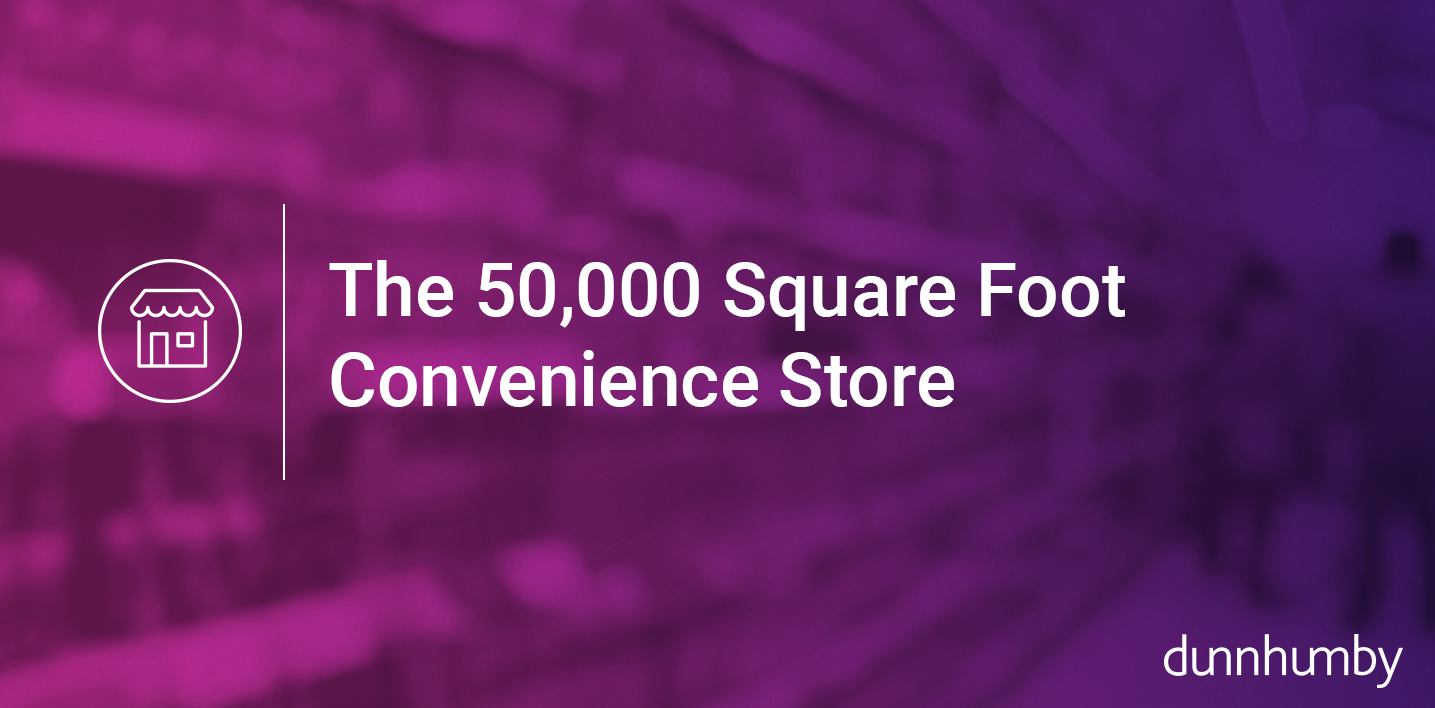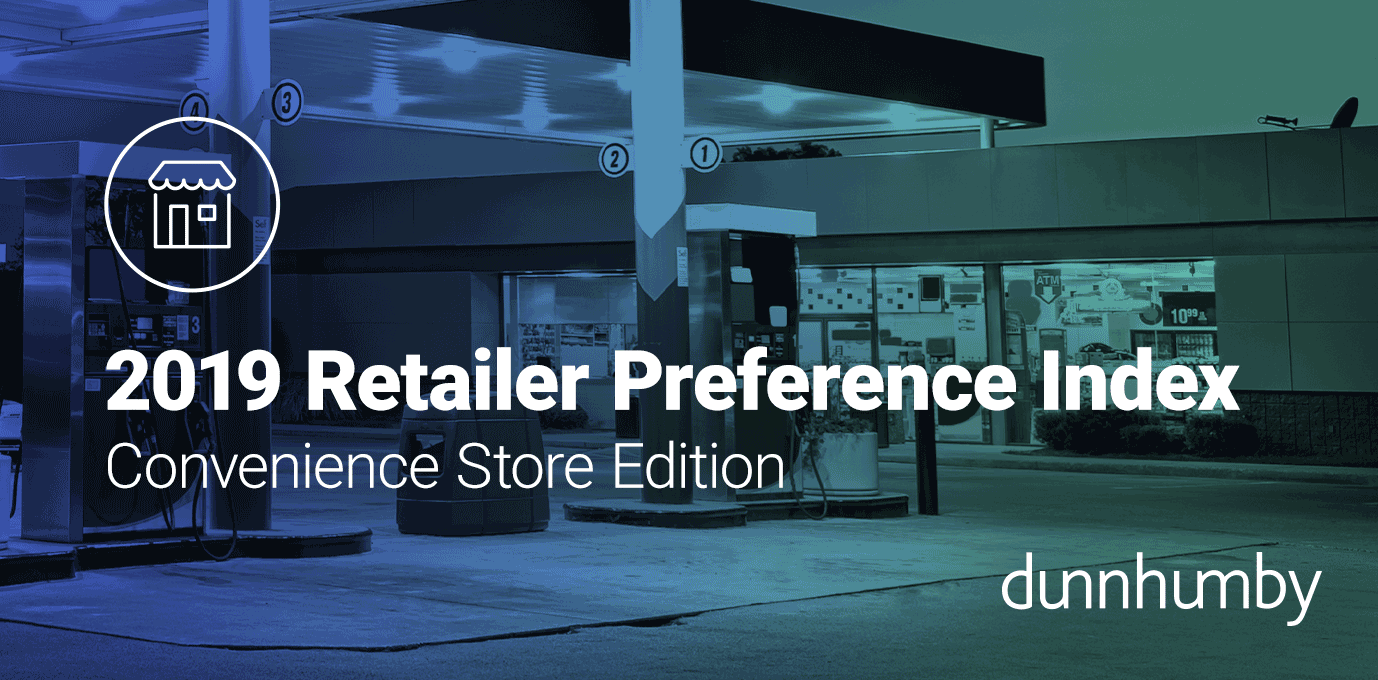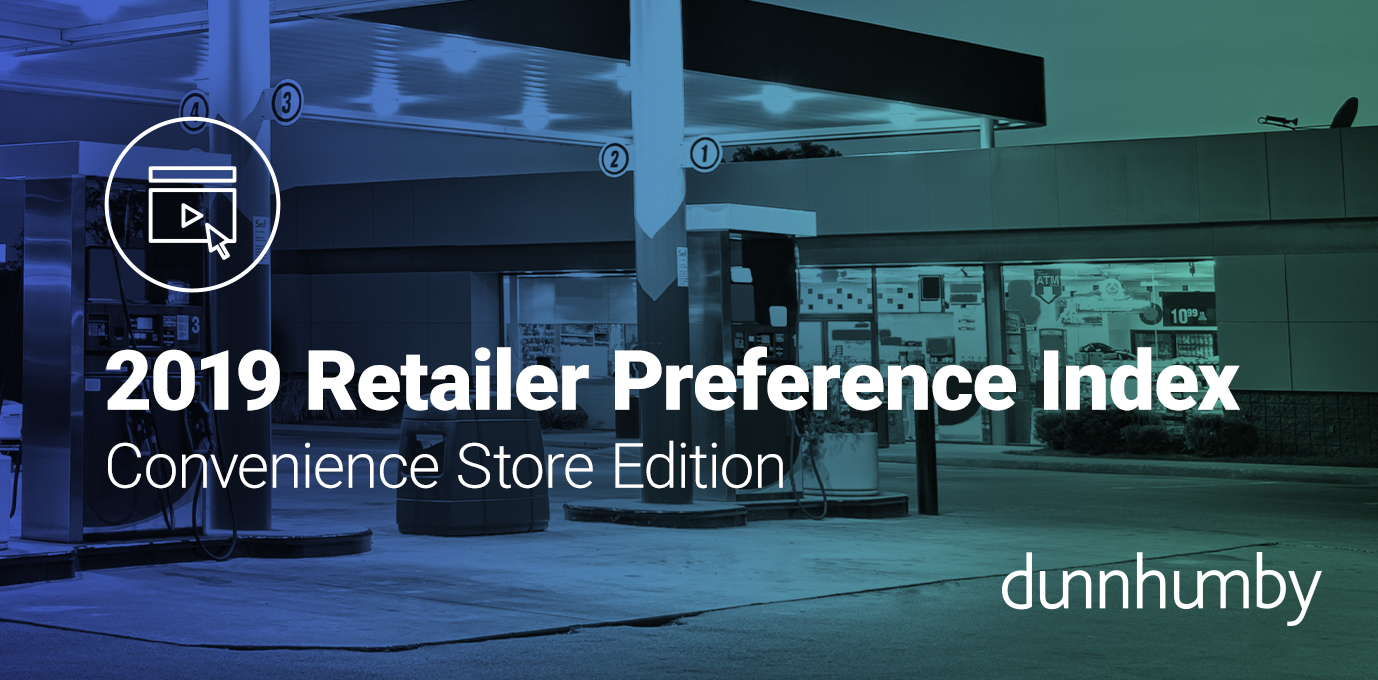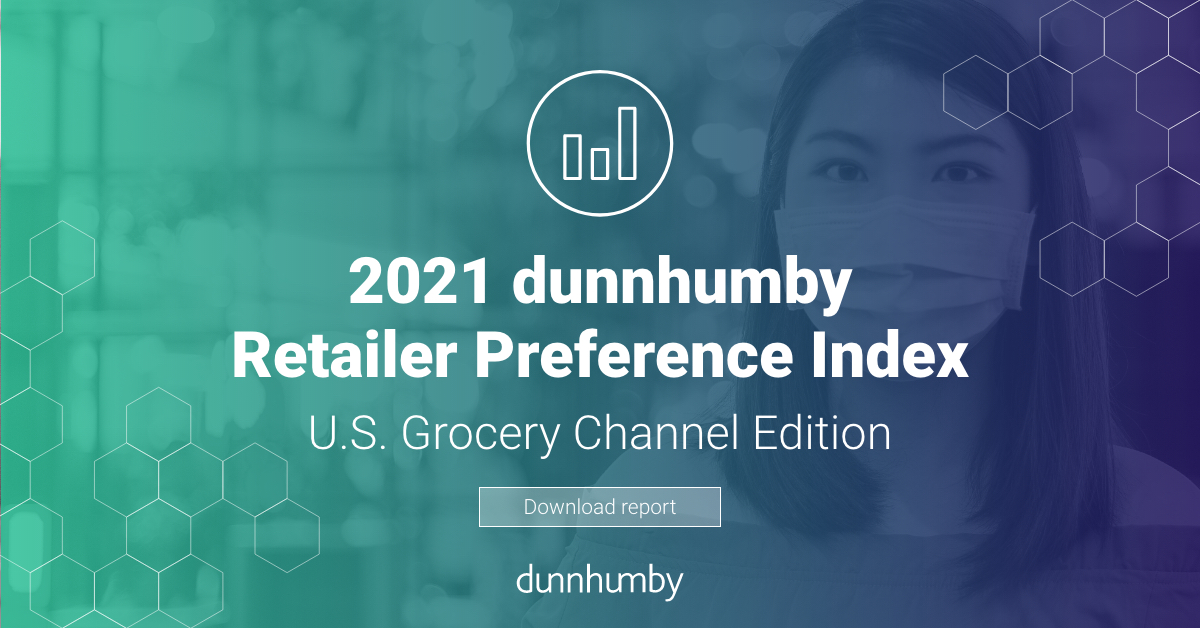
2020 dunnhumby Retailer Preference Index:
Grocery Channel Edition
In our third annual Retailer Preference Index (RPI) for the U.S. grocery channel, we look at the $700 billion grocery industry which finds itself potentially less than a year away from an economic downturn, according to many economists. Which grocers are best prepared to weather the storm, and what can other retailers do to compete? The RPI seeks to answer these and other questions, including:
- What drives customer preference for grocery retailers?
- Which retailers are winning and losing? And why?
- What can grocery retailers do to improve performance and win more trips?
Existing ranking methods focus primarily on retail growth based on store counts and revenue size, without linking growth to emotional or financial performance. We have a different perspective, one that focuses on the consumer and their emotional connection to the various retailers within the grocery channel. Our study surveyed 7,500 US consumers to uncover how they think and feel about grocery stores, and how they shop them. All with a goal to understand how Customers perceive stores through seven different drivers, and how these perceptions affect both the emotional connection and financial performance.
Our goal: to help retailers better understand their customers to deliver a value proposition that aligns with their needs, to earn more trips and drive sustainable growth.
To learn more, download a free copy of the report. If your company is in our report and you'd like your custom retailer profile, schedule a meeting with us at NRF 2020, or contact us.
The retailers evaluated are:
Acme Markets
Albertsons
Aldi
Amazon
Amazon Go
Big Y Foods
BI-LO
BJ’s Wholesale Club
Brookshire Grocery
Costco Wholesale
Family Fare
Fareway Stores
Food City
Food Lion
Food4Less/Foods Co.
Fred Meyer
Fresh Thyme
Fry’s Food Stores
Giant Food Stores
Giant Eagle
Hannaford
Harris Teeter
H-E-B
Hy-Vee
Ingles Markets
Jewel-Osco
King Soopers
Kroger
Lidl
Lowes Foods
Market Basket
Meijer
Peapod
Price Chopper
Publix
Raley’s Supermarkets
Ralphs
Safeway
Sam’s Club
Save Mart Supermarkets
Schnucks
Shaw’s and Star Market
ShopRite Supermarkets
Smart & Final
Smith’s Food and Drug
Sprouts Farmers Market
Stater Bros. Markets
Stop & Shop
SuperValu
Target
The Fresh Market
Tops Friendly Markets
Trader Joe’s
Vons
Walgreens
Walmart
Wegmans Food Markets
Weis Markets
WinCo Foods
Winn-Dixie Stores
View more recent thought leadership below:
Blogs and Reports

Blog | The 50,000 Square Foot Convenience Store
A new format in grocery retail is emerging: the 50,000 square foot convenience store. Its value proposition to customers is simple: higher quality perishables and ready-to-eat items than your typical grocery store. Thousands of the same center-store products you can also find at Walmart, Target, Amazon, Costco and Sam’s Club. Everything at higher prices. Added bonus: since the store is 10x to 20x bigger than your typical c-store, you can get your steps in and burn calories at the same time.
Wait, what?
Keep reading to find out more.

Report | 2019 Retailer Preference Index: Convenience, Drug, and Dollar Channel Edition
In dunnhumby’s second edition of the Retailer Preference Index (RPI) study, a comprehensive nationwide study, we explore the evolving US Convenience, Dollar, and Drug channels to help retailers navigate an increasingly difficult market. The study focuses on the following questions:
- What drives retailer preference among shoppers of smaller format grocery channels?
- What retailers are winning and losing? And why?
- What can retailers do to improve performance?
Webinars and Videos

Webinar On-Demand | What Makes a Winner in Grocery: Insights from the dunnhumby Retailer Preference Index
From large traditional grocers to disruptive start-ups, the food retail landscape is diverse and expanding. While there is no single path to retail success, market leaders follow a common principle – delivering what matters most to their Customers.
To better understand what makes a winner, dunnhumby surveyed more than 7,000 U.S. shoppers for the third-annual Retailer Preference Index (RPI). In what’s quickly become known as retailing’s equivalent of Gartner’s often-cited Magic Quadrant, dunnhumby’s RPI is a ranking of more than 60 large food and consumable retailers based on a combination of shopper sentiment and financial performance.
Join the Category Management Association and dunnhumby’s Daryl Wehmeyer, Managing Director of Category Management for North America, and Eric Karlson, Managing Director of Strategy for North America, for an overview of the RPI, why retailers should focus on Assortment Relevance, and a candid look at why some retailers win and others don’t, including:
- The seven drivers of consumer preference.
- The new rules of value perception, key drivers and amplifiers.
- How traditional, regional grocers can use Assortment Relevance as a competitive advantage against retailers like Lidl and Amazon Go.

Video | Top Insights from the 2019 dunnhumby Retailer Preference Index: Convenience, Dollar and Drug Channel Edition
In October 2019, we published our 2nd edition of the Retailer Preference Index: Convenience Channel edition to explore the $654.3 billion market. Our goal: to understand what drives consumer preference for the top 27 U.S. Convenience retailers based on responses from around 7,000 U.S. households. This is the first study that quantifies retailer preference, based on a combination of emotional connection and retailer preference.
Watch the video for a few of the key takeaways for retailers to consider.
© 2021 dunnhumby | Terms & Conditions | Privacy Notice | Cookie Notice | Non-compliance Policy | Modern Slavery Statement | Accessibility


